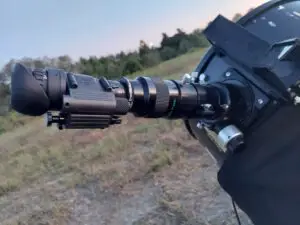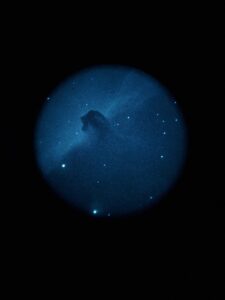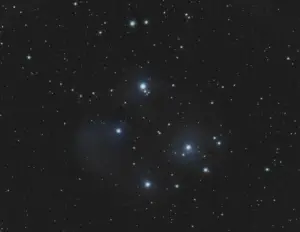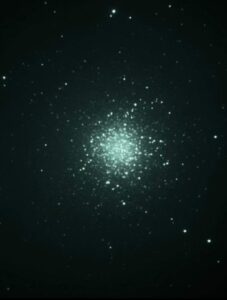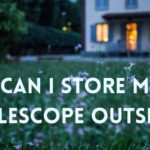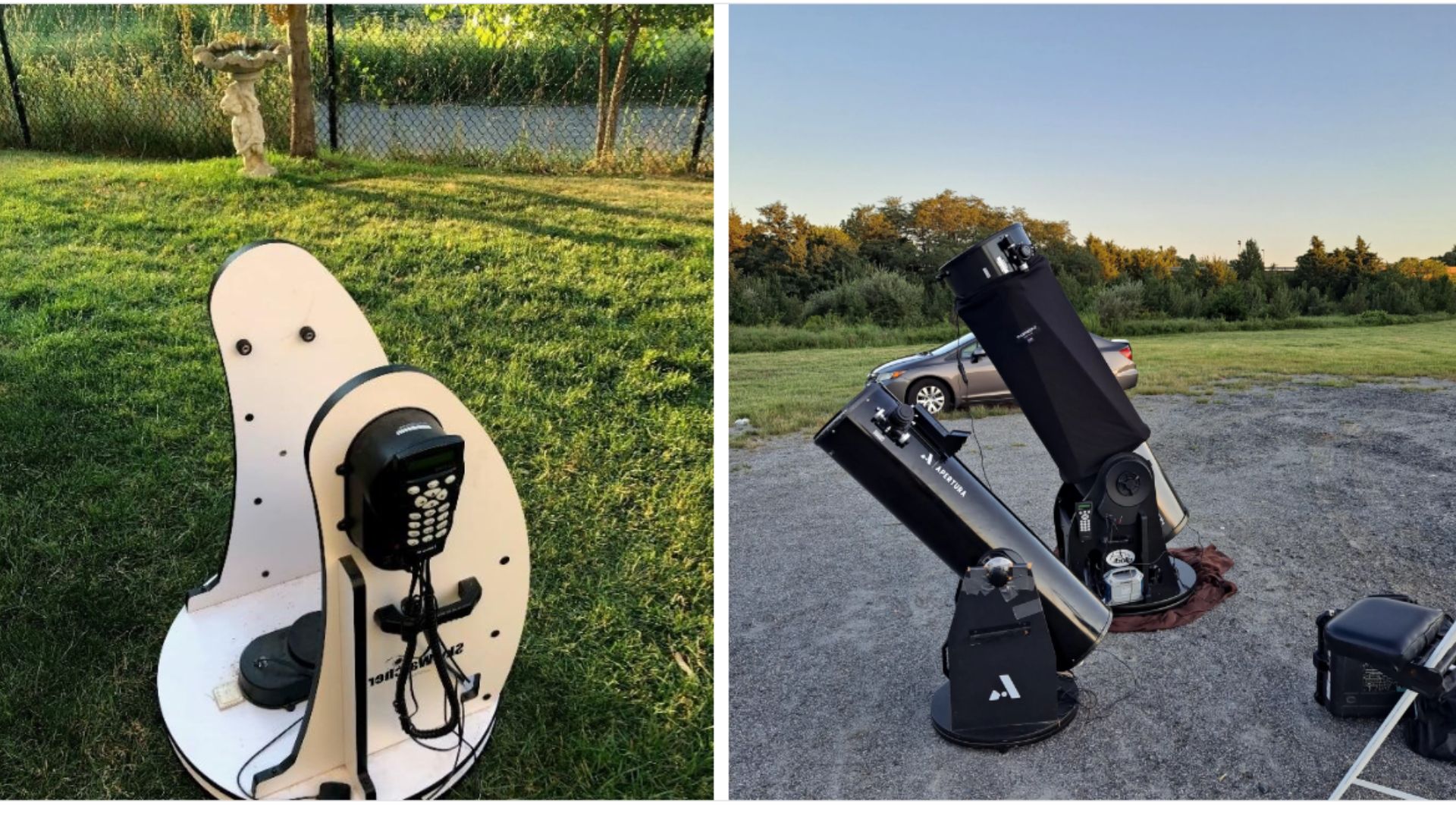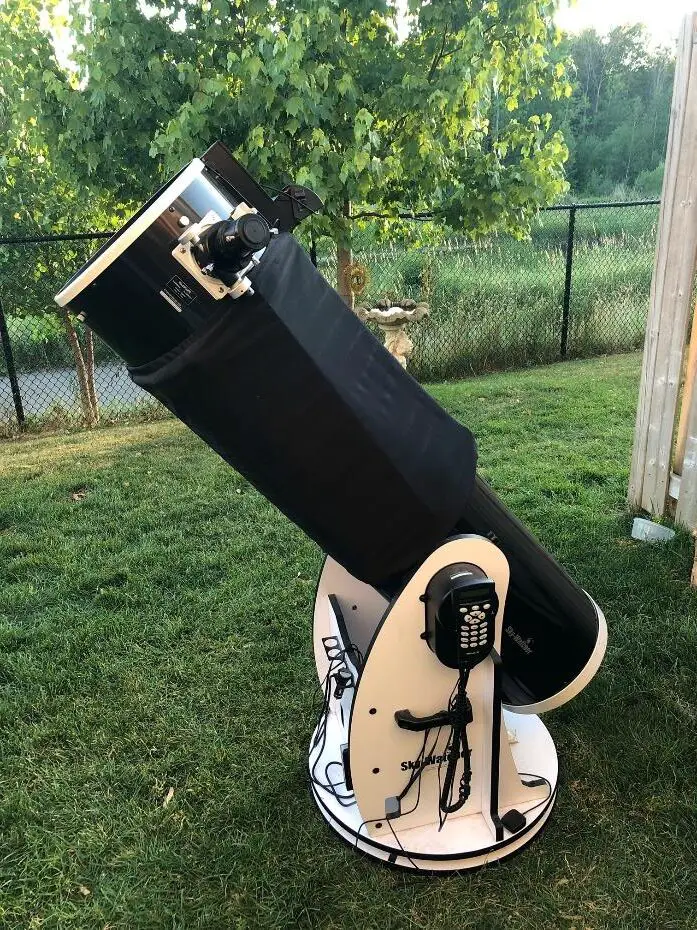The 20 inch Dobsonian is one of the biggest telescopes commonly used by hobbyists. These telescopes must be special ordered and are not available from the major manufacturers.
A 20 inch is 56% more aperture than a 16 inch Dobsonian. It is often recommended that you move up at least 1.4% in aperture for a noticeable difference in views.
Planets
Neptune
Neptune can be very difficult to find, but with a 20 inch on a clear night, with a wide field of view eyepiece you will be able to find the fuzzy image of Neptune.
When you find Neptune you may be able to distinguish the pale bluish tint of the planet.
Saturn
You will be able to see more vibrant color on Saturn and have a clear view of the Cassini Division in the rings of Saturn. This bright target becomes much more clear with the increased aperture.
You can also see the Hexagon on the North Pole of Saturn if you are well collimated.
Jupiter
You can observe the white cyclones on the southern hemisphere of Jupeter with a 20 inch telescope.
You can also observe the moons of Jupiter and if your timing is good you may catch a moon in transit.
While you may not be able to identify the moons you may be able to observe some of the smaller moons of Jupiter. The 4 galilean moons are visible with smaller scopes, the remaining 75 require more aperture to observe.
Galaxies
Markarian’s Chain
In good conditions you can make out more than a dozen galaxies and make out the structures of the galaxies.
Andromeda
While you have probably seen Andromeda with a smaller scope, with a 20 inch you should be able to see the dust trails within the galaxy.
The galaxies that orbit Andromeda, M31 and M110 are also visible with a 20 inch telescope.
Black Holes
Look for the black hole in M87 recently photographed for the first time by NASA. You will be able to see a light ring around the black hole.
Globular Clusters
You will be able to discern individual stars more clearly than with a smaller scope.
M13, M3 and M5 should be very bright and you will be able to resolve individual stars to the core. These views are breathtaking and unlike anything you can see with a smaller scope.
You will need good eyepieces and excellent conditions, but this is one of the most striking views with a large telescope.
Weight
One concern that many astronomers have when considering a 20 inch telescope is the weight.
If weight is an issue for you there are ultralite versions manufactured by Hubble Optics. These telescopes weigh only 89lbs combined optical tube and base.
There are other manufacturers that make 20 inch Dobsonian telescopes and, these scopes all seem to weigh around 150 lbs.
Many people will build dedicated transportation rigs for these telescopes. Trailers with ramps, and platforms with wheels are both options for moving this large telescope.
The larger Dobsonian telescopes are often truss tube Dobsonians meaning that the optical tube breaks down into three parts;
The Primary Mirror Housing
The Secondary Mirror Housing
Truss Tubes or Poles
This makes them much easier to transport but often requires a ladder to assemble in the field.
I own a 16 inch and I spent a lot of time researching the weight of each component to be sure I could lift and carry each piece.
I recommend keeping the weight very manageable so that you are more likely to use your scope more often. Better yet, keep it assembled and the wheel is where you want it to go!
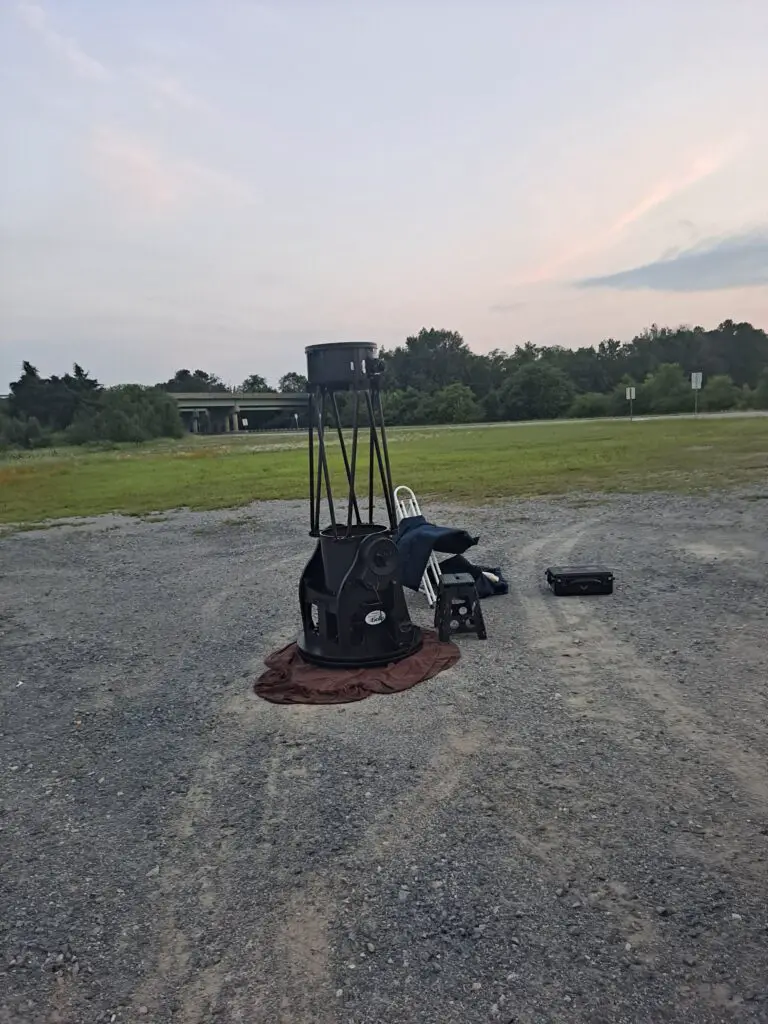
Weather
The weather is a big factor in determining what you will be able to see no matter what gear you are using.
Using weather apps can give you a good idea of what conditions you can expect, but it is never 100% correct.
Look for a dark night with very little moon light and no clouds, the dew point should be at least a few degrees away from the temperature and the transparency should be high.
You can travel to dark skies, but if there are clouds, you will not see much if you see anything at all.
Every astronomer can recall a night with exceptionally clear seeing or transparency when they were able to see clearer and further than any other night.
Eyepieces
The type of eyepieces you have will determine the magnification that you have available to you and can impact what objects you will be able to see.
The most striking images of globular clusters will be seen with about 200x magnification. You may enjoy using a wide field of view eyepiece or a more narrow fov, that tends to be motivated by preference.
Be sure that you have a range of eyepieces for any situation and be prepared with one or two high power eyepieces if you stumble upon excellent seeing conditions.
It is also possible that you will notice more coma in a scope of this size, so consider a coma corrector or a Paracorr, use the decision tree in the linked post to choose the best one.

Light Pollution
Dobsonians have been affectionately called Light Buckets because of their simple design and their very high light collecting capability.
The larger Dobs can only make light pollution issues more obvious.
If you live under Bortle 5 skies or worse I would not recommend a large Dobsonian unless you travel regularly to dark sites.
How Much Does a 20 Inch Telescope Cost?
There are a few 20 inch Dobsonian telescope manufacturers and available models cost between $6,000 and $10,500 at the time of writing. The more common 16 inch Dobsonian costs between $2,500 and $5,000. You may find a better deal on the used market or you may choose to build your own.
You can order mirrors for a 20 inch telescope for around $450, this makes the DIY route very attractive to some astronomers.
The cost of a 20 inch telescope is much more specialized and much more of a custom scope than a 16 inch and that is reflected in the price.
Is a Dobsonian Telescope Good for Photography?
Dobsonian telescopes are not the most popular telescope for photography as the mount does not track smoothly with the movement of the Earth.
You can get impressive photographs with a Dobsonian telescope using methods like video stacking.
While Dobsonians are often dismissed when talking about astrophotography, I think they deserve some respect. Their low cost makes the hobby more accessible to more people and the images I have seen captured and captured myself still impress my friends.


